Contents
Guide
AFRO-ASIAN-AMERICAN COOKING FOR
BIG NIGHTS, WEEKNIGHTS, & EVERY DAY
Between
Harlem
AND
Heaven
JJ JOHNSON AND
ALEXANDER SMALLS
with Veronica Chambers PHOTOGRAPHY BY Beatriz da Costa FOOD STYLING BY Roscoe Betsill

The author and publisher have provided this e-book to you for your personal use only. You may not make this e-book publicly available in any way.
Copyright infringement is against the law. If you believe the copy of this e-book you are reading infringes on the authors copyright, please notify the publisher at: http://us.macmillanusa.com/piracy.
 DEDICATED TO THE
DEDICATED TO THE
BRILLIANT CULINARY LEGACY
OF THE AFRICAN PEOPLE
THROUGHOUT THE DIASPORA


Harlem makes you hungry. For art. For music. For music.
For street style. For history. For old people. For young people. For kids playing basketball thats so good that pro players hit the courts during their off hours. For girls who jump rope with so many flips and so much gymnastic flair that every other sidewalk feels like an olympic arena.
Directions on how to get to Harlem inspired one of the most famous jazz standards of our time. In 1939, Duke Ellington offered a young musician named Billy Strayhorn a place in his orchestra. He sent him money to travel, by train, from Pittsburgh to New York City. Once Strayhorn arrived in New York City, Ellington instructed him how to get to his home in Harlem: Take the A train. Strayhorn turned the directions into a song and it became a beloved tune that was the signature of Duke Ellingtons orchestra. Ella Fitzgerald recorded the song more than a dozen times, and you can her live version, complete with her signature scatting, on Ella in Hollywood. The song has been recorded and performed by artists as diverse as Charles Mingus, Chaka Khan, Phish, and the Rolling Stones.
Its as true now as it was back in 1939: To get to Duke Ellingtons Harlem, you take the A train. (You can also take the B or the C.) When you get there, youll want to head directly to Mintons, but dont rush and dont, if you can help it, Uber there. You dont want door-to-door service when youre coming to Harlem to eat. You want to take it all in. Let Harlem make you hungry first. Harlem is where we met and began to create the culinary journey that is this book.
You have to understand that Alexanders home is one of Harlems most revered salons. Drop by any given Sunday and you will find movie stars and musicians, architects and athletes. Alexander spent decades traveling the globe as a Tony Awardwinning opera singer, and offstage, he began to mix the low-country cooking of his South Carolina roots with dishes and flavors from all across the African diaspora. JJ was an up-and-coming chef who had been trained in classic European techniques but longed to bring to the table the influences of his Caribbean childhood and all the ways that brought Asia and Africa together on the plate. Using Alexanders kitchen as a laboratory, the two men began to create the Afro-Asian-American flavor profile that comprises this book. Instead of the traditional mother sauces of France, they whipped up a peanut sauce they called the Mother Africa sauce.
They served citrus jerk bass with a West African grain called fonio. They served spiced goat onigiri style, enshrined in a square of sticky rice. Oxtail dumplings in a green apple curry was something theyd never seen on any other menu, but it was beautiful to the eye and even more delicious to taste Together, Alexander and JJ opened two restaurants, The Cecil and Mintons, both occupying classic Harlem spaces rich with history. And just as people flocked to Alexanders living room where the food was plentiful, the cocktails were sweet, and the company was sweeter, the Afro-Asian-American flavor profile brought diners to a part of Harlem that many had never visited before. Esquire named The Cecil the best new restaurant in America and reservations became hard to come by. There were nights when ambassadors dined with world leaders and nights when there were so many Grammy Award winners at a table that no one was surpised when they burst into song.
You can get roast chicken and grilled salmon anywhere, but you had to come uptown for plaintain kelewele and tofu gnocchi with black garlic crema and scallions. As youll see when you begin to cook from this collection, Alexander and JJ are artists first and cooks second. As they begin new creative journeys professionally, this cookbook commemorates a once-in-a-lifetime collaboration. Nobody saved the menu, or the recipes, for many Harlems most iconic suppers during its first Renaisssance when writers like Langston Hughes, Zora Neale Hurston, Claude McKay, and Jessie Fauset began to find their voices. But what Paul Kellogg wrote about the magic and power of Harlem to inspire new and diverse voices with the power to change the world is as true now as it ever was: We are interpreting a racial and cultural revival in the new environment of the nothern city; interpreting the affirmative genius of writers, thinkers, poets, artists, singers, and musicians, which make for a new rapprochement between races at the same time that they contribute to the common pot of civilization. These recipes were developed by Alexander Smalls and JJ Johnson.
While chef at The Cecil, JJ brought these recipes to life in the kitchen and with the cooking team. TheI in the recipe headnotes refers to JJ, unless otherwise noted. We hope this book will allow you to visit Harlem every time you make one of these recipes, and that youll find, as we have, that the dishes gathered here both fill your plate and feed your imagination. To paraphrase that great Harlem Renaissance poet Jean Toomer: Harlem is the kind
of place that calls
you from your home
and teaches you
how to dream.  Between
Between
Harlem
And
Heaven AFRO-ASIAN-AMERICAN COOKING FOR
BIG NIGHTS, WEEKNIGHTS, & EVERY DAY
A Feast Rich in History
SOUTH CAROLINA, THE AFRICAN DIASPORA, AND THE OPERA THAT HAS YET TO BE SUNG
BY ALEXANDER SMALLS

I was born and raised in Spartanburg, South CarolinaUpcountry it was called. But because my fathers family migrated from the Charleston, Beaufort, and Sea Island region of the state, our home was considered a Lowcountry household: rich in African-American culture and southern traditions.
I was told it was because of the food we ate: lots of seafood stews, soups, fish, and chicken that were always spicy, and more rice than any of my friends, as often as twice a day. We sometimes even ate rice for breakfast with eggs. As a child, music, particularly singing, was my first love. A classically trained baritone, I toured the world as an opera singer, winning both a Tony and a Grammy for my recording of

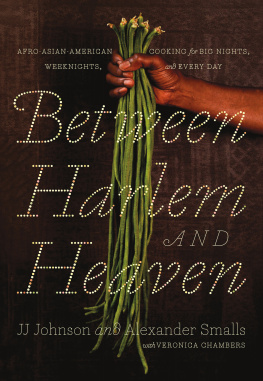

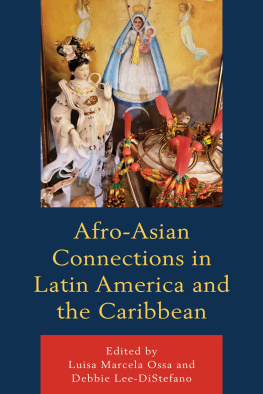

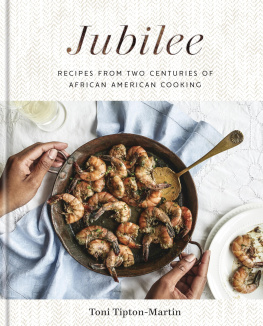
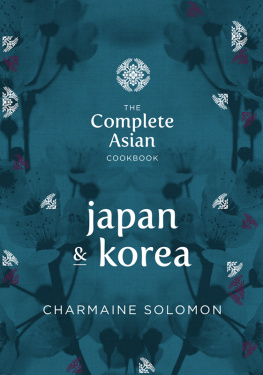
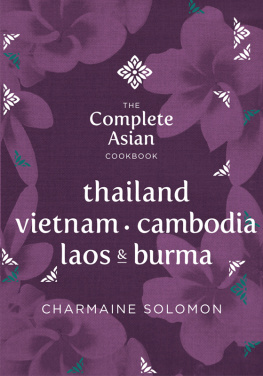
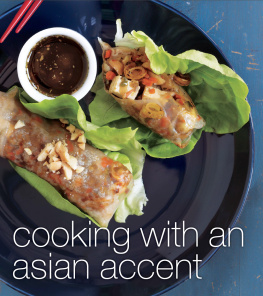

 The author and publisher have provided this e-book to you for your personal use only. You may not make this e-book publicly available in any way. Copyright infringement is against the law. If you believe the copy of this e-book you are reading infringes on the authors copyright, please notify the publisher at: http://us.macmillanusa.com/piracy.
The author and publisher have provided this e-book to you for your personal use only. You may not make this e-book publicly available in any way. Copyright infringement is against the law. If you believe the copy of this e-book you are reading infringes on the authors copyright, please notify the publisher at: http://us.macmillanusa.com/piracy.  DEDICATED TO THE
DEDICATED TO THE

 Harlem makes you hungry. For art. For music. For music.
Harlem makes you hungry. For art. For music. For music.  Between
Between I was born and raised in Spartanburg, South CarolinaUpcountry it was called. But because my fathers family migrated from the Charleston, Beaufort, and Sea Island region of the state, our home was considered a Lowcountry household: rich in African-American culture and southern traditions.
I was born and raised in Spartanburg, South CarolinaUpcountry it was called. But because my fathers family migrated from the Charleston, Beaufort, and Sea Island region of the state, our home was considered a Lowcountry household: rich in African-American culture and southern traditions.